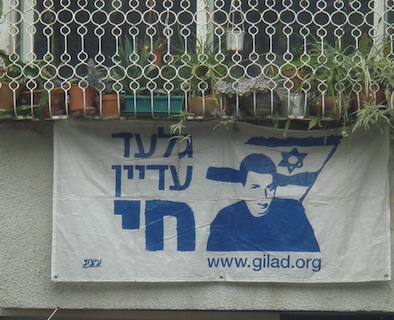On June 25, 2006, I was enjoying my summer vacation having recently completed my sophomore year at UMass Amherst. That past January, just a few days after my 19th birthday, I traveled to Israel for the first time with Birthright. A place I had dreamed of visiting from a very young age.
On June 25, 2006, IDF Corporal Gilad Shalit was taken hostage by the internationally recognized terrorist organization, Hamas, during an unprovoked cross border raid via underground tunnels near the Israel-Gaza border. He was just a few months shy of his 19th birthday.
The news of Gilad’s kidnapping was shocking, but there was hope he would be found quickly and unharmed.

Gilad Shalit was held hostage by Hamas for five years. No one knew where he was kept, and no one knew if he was healthy, as Hamas refused to allow the International Committee of the Red Cross to visit him. The only sign of his life was one audiotape and one videotape that Hamas terrorists released in 2007 and 2009 to be used as bargaining chips for negotiations with the Israeli government. For the release of Gilad Shalit, Hamas demanded over a 1000 Palestinian and Israeli-Arabs to be released from Israeli jails, included those with “blood on their hands.”
I prayed for him to be released. How could someone my age be held by terrorists? Terrorists with the same mentality, the same aggression as those who lynched Vadim Nurhitz and Yossi Avrahami in 2000. Why was I at age 19, 20, 21 able to live a carefree life, attending classes, seeing friends and family while someone else across the world, the exact same age as me was alone, hidden away from his friends and family, tortured for defending his country, innocent men, women, and children, from these murderers? Why wasn’t the world condemning Hamas and demanding his release?
Gilad Shalit was on the minds of most Israelis. His family and friends held weekly protests outside the Prime Minister’s house. They weren’t going to let Israel forget about their son. They weren’t going to lose him.
I remember seeing the clock on many Israeli media sites, counting down the days, the hours that Gilad Shalit was still in captivity.
In 2009, 2010, and 2011, I traveled to Israel while leading CAMERA’s Annual Leadership and Advocacy Training Mission and saw the many signs and graffiti calling for Gilad to be released. His picture was everywhere.

It was a strange feeling to be touring around Israel, capturing pictures of Jerusalem’s unique stone walls, while Gilad’s picture peaked out from the corner of your lens.
On October 18, 2011, Gilad Shalit was released in exchange for 1,027 Palestinian and Israeli- Arab prisoners. Gilad’s safe return to home was a heavy price to pay for many Israelis. Some of the prisoners released were expected to serve life sentences for murdering innocent Israelis. This included the infamous Aziz Salha who participated in the lynching of Vadim Nurhitz and Yossi Avrahami, famously pictured waving his bloody hands outside of the window to the cheering crowds gathered on the street in Ramallah.

There have been too many young soldiers and Israeli civilians before and since Gilad’s kidnapping and release who weren’t able to make it home.
Israel and her people mourn the death of every life taken before their time and refuses to succumb to the terrorists’ will.
The price that was paid for Gilad Shalit’s release wasn’t easy, but I, among many Israelis, released a sigh of relief to have one more son return home.
Contributed by CAMERA’s International Campus Director, Aviva Slomich.

